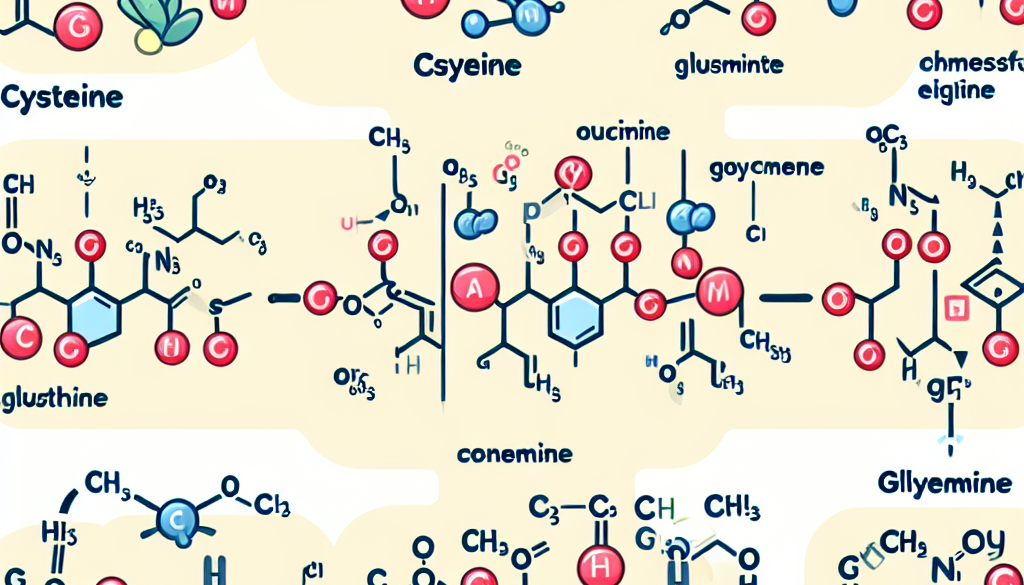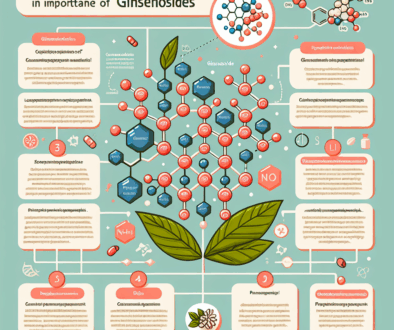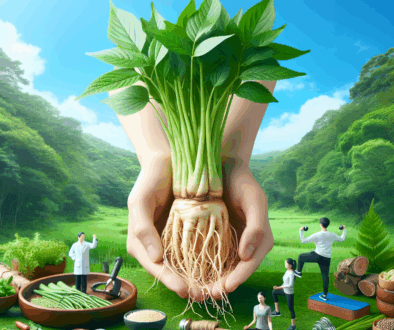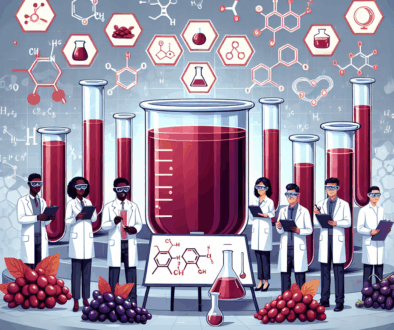Cysteine Synthesis of Glutathione: Process
-
Table of Contents
- Glutathione Synthesis and the Role of Cysteine: A Detailed Exploration
- Understanding Glutathione: The Master Antioxidant
- The Biosynthesis of Glutathione: An Overview
- Cysteine: The Critical Amino Acid in Glutathione Synthesis
- Step-by-Step Process of Glutathione Synthesis
- 1. Formation of Gamma-Glutamylcysteine
- 2. Synthesis of Glutathione
- Regulation of Glutathione Synthesis
- Implications of Glutathione Deficiency
- Strategies to Boost Glutathione Levels
- Conclusion: The Significance of Cysteine in Glutathione Synthesis
- Discover ETprotein’s High-Quality Protein Products
Glutathione Synthesis and the Role of Cysteine: A Detailed Exploration
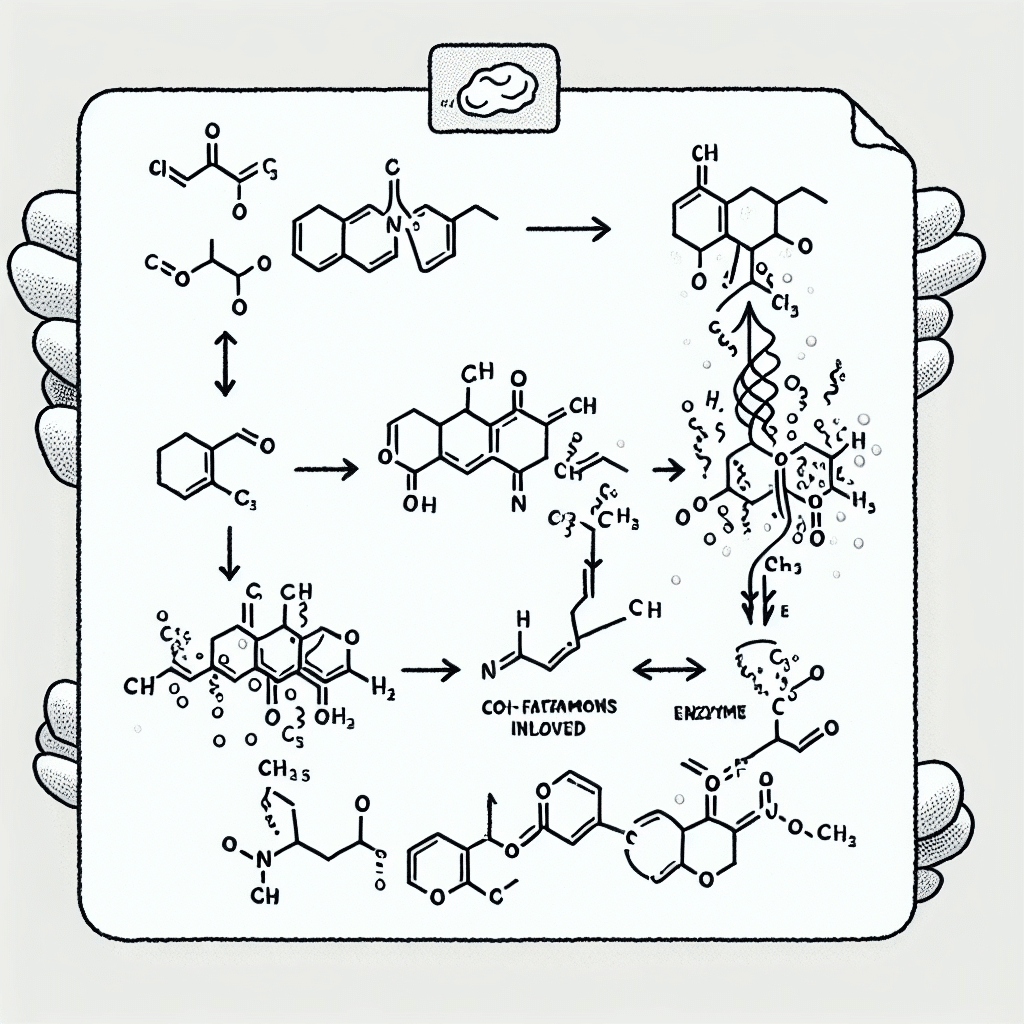
Glutathione, often referred to as the master antioxidant, is a tripeptide composed of three amino acids: glutamate, cysteine, and glycine. It plays a crucial role in protecting cells from oxidative stress, detoxifying harmful substances, and maintaining the immune system. The synthesis of glutathione is a complex biological process, with cysteine being a key component due to its sulfur-containing thiol group. This article delves into the synthesis of glutathione, emphasizing the importance of cysteine and the intricate pathways involved in this vital biochemical process.
Understanding Glutathione: The Master Antioxidant
Before exploring the synthesis of glutathione, it is essential to understand its significance in the human body. Glutathione is involved in various cellular processes, including:
- Neutralizing reactive oxygen species (ROS) and free radicals
- Regenerating vitamins C and E to their active forms
- Transporting mercury out of cells and the brain
- Assisting in the metabolic and biochemical reactions, such as DNA synthesis and repair
- Supporting immune function by influencing lymphocyte proliferation
The Biosynthesis of Glutathione: An Overview
The biosynthesis of glutathione occurs within the cells in two ATP-dependent steps, catalyzed by two key enzymes:
- Glutamate-cysteine ligase (GCL), also known as gamma-glutamylcysteine synthetase
- Glutathione synthetase (GS)
The process begins with the formation of gamma-glutamylcysteine from glutamate and cysteine, followed by the addition of glycine to produce glutathione. This pathway is tightly regulated to maintain cellular homeostasis and respond to oxidative stress.
Cysteine: The Critical Amino Acid in Glutathione Synthesis
Cysteine is often considered the rate-limiting substrate in glutathione synthesis due to its relative scarcity in foods and the body’s cells. The availability of cysteine directly influences the production of glutathione. There are several pathways through which cysteine can be obtained:
- Dietary intake of cysteine-rich foods or cysteine through N-acetylcysteine (NAC) supplementation
- Conversion from methionine through the transsulfuration pathway
- Recycling from protein degradation and glutathione turnover
The body’s ability to synthesize cysteine from methionine is particularly important in maintaining adequate levels of glutathione.
Step-by-Step Process of Glutathione Synthesis
1. Formation of Gamma-Glutamylcysteine
The first step in glutathione synthesis is the formation of gamma-glutamylcysteine. This reaction is catalyzed by GCL and is the rate-limiting step of the entire process. GCL itself is regulated by various factors, including the levels of glutathione, to ensure balance within the cell.
2. Synthesis of Glutathione
Once gamma-glutamylcysteine is formed, GS catalyzes the addition of glycine to produce glutathione. This step is relatively straightforward and is not considered rate-limiting.
Regulation of Glutathione Synthesis
The synthesis of glutathione is a tightly regulated process, with several mechanisms in place to ensure balance:
- Feedback inhibition of GCL by glutathione to prevent overproduction
- Upregulation of GCL in response to oxidative stress to increase glutathione levels
- Genetic factors that can affect the expression and activity of GCL and GS
Understanding these regulatory mechanisms is crucial for developing strategies to enhance glutathione levels in the body, particularly in the context of disease prevention and treatment.
Implications of Glutathione Deficiency
A deficiency in glutathione can lead to a range of health issues, including:
- Oxidative stress and increased cellular damage
- Impaired detoxification processes
- Weakened immune response
- Increased risk of chronic diseases such as cancer, cardiovascular diseases, and neurodegenerative disorders
Therefore, maintaining adequate levels of cysteine and promoting efficient glutathione synthesis is vital for overall health and well-being.
Strategies to Boost Glutathione Levels
There are several strategies that can be employed to enhance glutathione levels in the body:
- Increasing dietary intake of cysteine-rich foods such as whey protein, poultry, eggs, and garlic
- Supplementation with N-acetylcysteine (NAC) or glutathione precursors
- Lifestyle modifications such as regular exercise and avoiding excessive alcohol consumption
- Pharmacological interventions in cases of severe deficiency or chronic conditions
These strategies can help support the body’s natural glutathione production and provide a buffer against oxidative stress.
Conclusion: The Significance of Cysteine in Glutathione Synthesis
In conclusion, the synthesis of glutathione is a critical biological process that relies heavily on the availability of cysteine. Understanding the pathways and regulatory mechanisms involved in glutathione production can provide insights into maintaining optimal health and preventing disease. By ensuring adequate cysteine levels through diet, supplementation, and lifestyle choices, individuals can support their body’s antioxidant defenses and promote overall well-being.
Discover ETprotein’s High-Quality Protein Products
If you’re looking to support your glutathione levels through dietary means, ETprotein offers a range of high-quality protein products that can help. Their selection includes organic rice protein, pea protein, and other plant-based options that are rich in cysteine and other amino acids necessary for glutathione synthesis. With non-GMO, allergen-free attributes, and a neutral taste, ETprotein’s products are suitable for various dietary preferences and can be easily incorporated into your health regimen.
About ETprotein:
ETprotein, a reputable protein and L-(+)-Ergothioneine (EGT) Chinese factory manufacturer and supplier, is renowned for producing, stocking, exporting, and delivering the highest quality organic bulk vegan proteins and L-(+)-Ergothioneine. They include Organic rice protein, clear rice protein, pea protein, clear pea protein, watermelon seed protein, pumpkin seed protein, sunflower seed protein, mung bean protein, peanut protein, and L-(+)-Ergothioneine EGT Pharmaceutical grade, L-(+)-Ergothioneine EGT food grade, L-(+)-Ergothioneine EGT cosmetic grade, L-(+)-Ergothioneine EGT reference grade and L-(+)-Ergothioneine EGT standard. Their offerings, characterized by a neutral taste, non-GMO, allergen-free attributes, with L-(+)-Ergothioneine purity over 98%, 99%, cater to a diverse range of industries. They serve nutraceutical, pharmaceutical, cosmeceutical, veterinary, as well as food and beverage finished product distributors, traders, and manufacturers across Europe, USA, Canada, Australia, Thailand, Japan, Korea, Brazil, and Chile, among others.
ETprotein specialization includes exporting and delivering tailor-made protein powder and finished nutritional supplements. Their extensive product range covers sectors like Food and Beverage, Sports Nutrition, Weight Management, Dietary Supplements, Health and Wellness Products, and Infant Formula, ensuring comprehensive solutions to meet all your protein needs.
As a trusted company by leading global food and beverage brands and Fortune 500 companies, ETprotein reinforces China’s reputation in the global arena. For more information or to sample their products, please contact them and email sales(at)ETprotein.com today.

